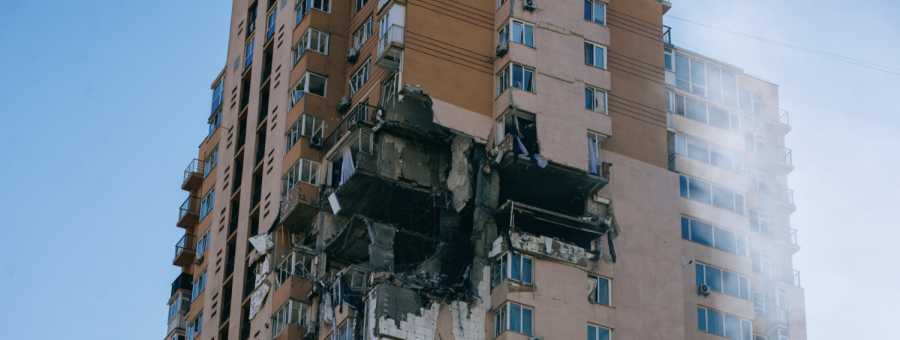Dear Colgate Community,
For the third year in a row since our founding in 2021, the Colgate Disability Activists (CDA) had the opportunity to deliver a talk titled “Inaccessibility and Exclusion at Colgate and Beyond” at the ALANA Cultural Center Social Justice Summit 2024. This year, we had no concrete examples of accessibility advancements on campus to celebrate, or at least none that were made known publicly to the student body. That fact is all the more troubling because 2022 saw many improvements to accessibility on campus. That year, automatic doors were installed at Frank Dining Hall and Huntington Gymnasium, the Student Government Association (SGA) Cabinet added an Accessibility Advocate position and the Office of Student Disability Services (OSDS) brought on a second full-time office employee, Learning Support Coordinator Molly Mendolia. In the calendar year 2023, while there were some encouraging events and collaborations on campus, including a talk on anti-ableism in September and a conversation on disability and sexuality in November, we have not seen this energy reflected back operationally.
Accessibility — and, for that matter, inaccessibility — at Colgate University is about so much more than the hill that challenges us all or the old buildings that complicate Americans with Disabilities Act (ADA) compliance. Conversations around accessibility at Colgate often neglect to address the numerous other ways we feel the administration has failed students with disabilities, as junior Hope Sacco and first-year Arshia Khadivizand have elucidated in a recent Maroon-News commentary piece.
As confirmed by OSDS, and as we have reported at previous ALANA Social Justice Summits, there are over 800 students registered with OSDS, which is about a quarter of the student body. However, OSDS only has two full-time staff members who handle student caseloads, resulting in a roughly 400-to-1 student-to-staff ratio — notably different from Colgate’s widely publicized 9-to-1 student-to-faculty ratio. Additionally, the Accommodated Testing Center (ATC), located on the first floor of Gate House, while physically accessible by ramp, is only one room that has to be shared by many students with a wide variety of accommodations who may have opposing needs. For example, a student who takes exams on a computer could be seated just feet away from someone who might have sensory issues and find the typing sound highly distracting.
While we do not usually think about it as related to accessibility, another prevalent issue on campus is the lack of gender-neutral bathrooms. Senior R Hunsicker, founder of Trans* Advocacy Group (TAG), has been working to increase gender-neutral bathroom accessibility for the past two years, with little success. Hunsicker traced the origin of their efforts to their experience in their first year on campus.
“Over three years ago, as a first-year, I remember getting fed up with being unable to use the restroom in any of the dining facilities and most of the academic buildings,” Hunsicker said. “As a trans student, having access to the few gender-neutral restrooms on this campus is always brushed off as a ‘little thing,’ but it’s not.”
As shown on the Colgate University campus map, there are still no gender-neutral bathrooms in Frank Dining Hall, the O’Connor Campus Center (the COOP) or Chobani at Hieber Café, and only one in Case-Geyer, with none in the Cooley Science Library.
“I’ve been working on a project called ‘Project Amenity’ with [the Office of] LGBTQ+ Initiatives, Residential Life and the Office of Equity and Diversity to try to not only get more gender-neutral restrooms, but make the current ones actually accessible to trans students, since so many cisgender students use them,” Hunsicker said. “Having to leave class to walk to another building or hold it for up to eight hours is exhausting and a constant reminder that the institution doesn’t care about me enough to ensure I have a place to use the restroom.”
It goes without saying that not having access to an appropriate bathroom can lead to a variety of physical and mental health problems, which also applies to students who need physically accessible restrooms. These are ultimately disabling situations resulting from choices made about our built environment — intentionally or not; however, this means we also have the power to instead make choices that enable everyone to navigate our campus with dignity.
Unfortunately, getting change to happen on campus can be an uphill battle that actually puts more burden on students, as Hunsicker has found in their activism.
“Even with my efforts, I’ve had direct pushback from staff who do not see being segregated from bathrooms as a problem,” Hunsicker said. “When I first started Project Amenity, I tried to get OSDS to work with me and LGBTQ+ Initiatives, since there is overlap with gender-neutral restrooms and accessible restrooms on this campus. However, OSDS declined, stating the office does not cater to “transgendered” issues — a word that is considered highly offensive and even a slur. Even though multiple staff were copied on this email, nothing came out of it. No retribution, no apology. Nothing. As a neurodivergent trans student, now I have limited access to a necessity and no accommodations, since I mistrust the OSDS.”
The only mention of gender-neutral restrooms in Colgate’s Third-Century Plan is the promise of “continued development of gender-inclusive restrooms.” A time frame or any further details have yet to be provided. While the Third-Century Plan also contains some references to improving accessibility through major expansion and renovation projects, we are concerned that it will not be enough.
Beyond the accessibility promises of the Third-Century Plan, we must not forget about the social dimension of disability, which perpetuates the construction of exclusionary spaces in the first place. In her time at Colgate, junior Rachel Plasky has experienced numerous microaggressions regarding her stutter that have left her feeling alienated but ultimately compelled her to pursue on-campus activism.
“When I first got to Colgate, a highly respected staff member asked me if I was sure of my name when I struggled to get the ‘r’ sound out,” Plasky said. “I’ve had similar situations with staff and students alike since then, with people often laughing after I stutter or questioning if I know what I’m saying. On the other end of the spectrum, a staff member recently had a whole room literally applaud me for having the ‘courage’ to simply show up to their professional program. Colgate clearly has a weird culture around disability, and it seems like that needs to change for any real progress to be made.”
Inaccessibility at Colgate is a systemic issue, seemingly stemming from what feels like both the ignorance and disinterest of both the administration and campus community toward the barriers students with disabilities and/or LGBTQ+ identities face on a day-to-day basis. In this letter, we have touched on only a few of the many barriers that affect students on our campus. For too long there has been a culture of silence around Colgate’s inaccessibility problem, restricting it to surface-level discussions and platitudes — so let’s actually talk about it.
Sincerely,
Leaders of Colgate Disability Activists:
Grace Dow ’25 (gdow@colgate.edu)
Jadan Hand ’24 (jhand@colgate.edu)
Rachel Plasky ’25 (rplasky@colgate.edu)
President and Founder of Trans* Advocacy Group:
R Hunsicker ’24 (rhunsicker@colgate.edu)












